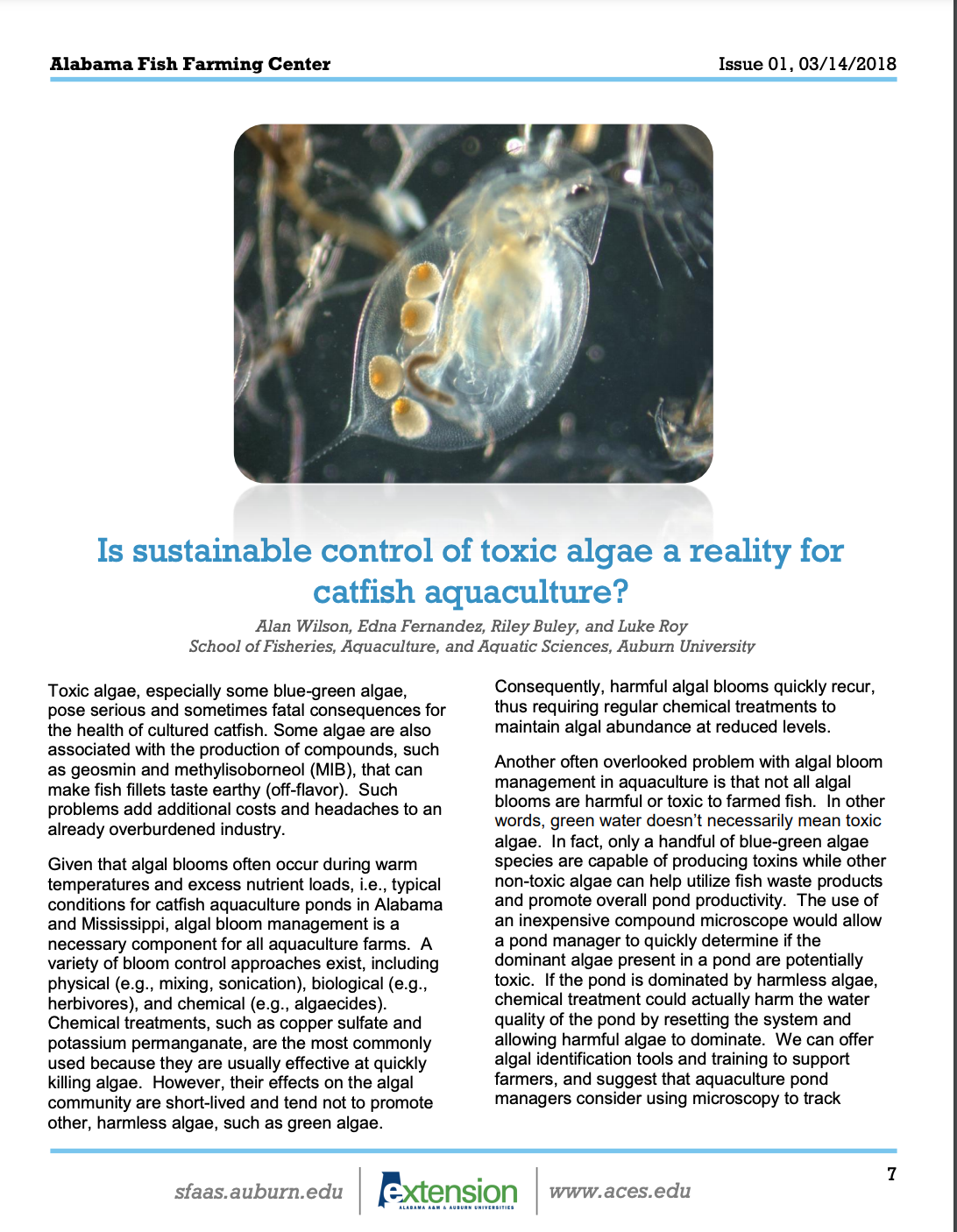
Citation
Wilson, A. E., E. G. Fernandez, R. Buley, and L. A. Roy. 2018. Is sustainable control of toxic algae a reality for catfish aquaculture? Fish Farming News 2018(1):7-8.
Abstract
Toxic algae, especially some blue-green algae, pose serious and sometimes fatal consequences for the health of cultured catfish. Some algae are also associated with the production of compounds, such as geosmin and methylisoborneol (MIB), that can make fish fillets taste earthy (off-flavor). Such problems add additional costs and headaches to an already overburdened industry.
Given that algal blooms often occur during warm temperatures and excess nutrient loads, i.e., typical conditions for catfish aquaculture ponds in Alabama and Mississippi, algal bloom management is a necessary component for all aquaculture farms. A variety of bloom control approaches exist, including physical (e.g., mixing, sonication), biological (e.g., herbivores), and chemical (e.g., algaecides). Chemical treatments, such as copper sulfate and potassium permanganate, are the most commonly used because they are usually effective at quickly killing algae. However, their effects on the algal community are short-lived and tend not to promote other, harmless algae, such as green algae.